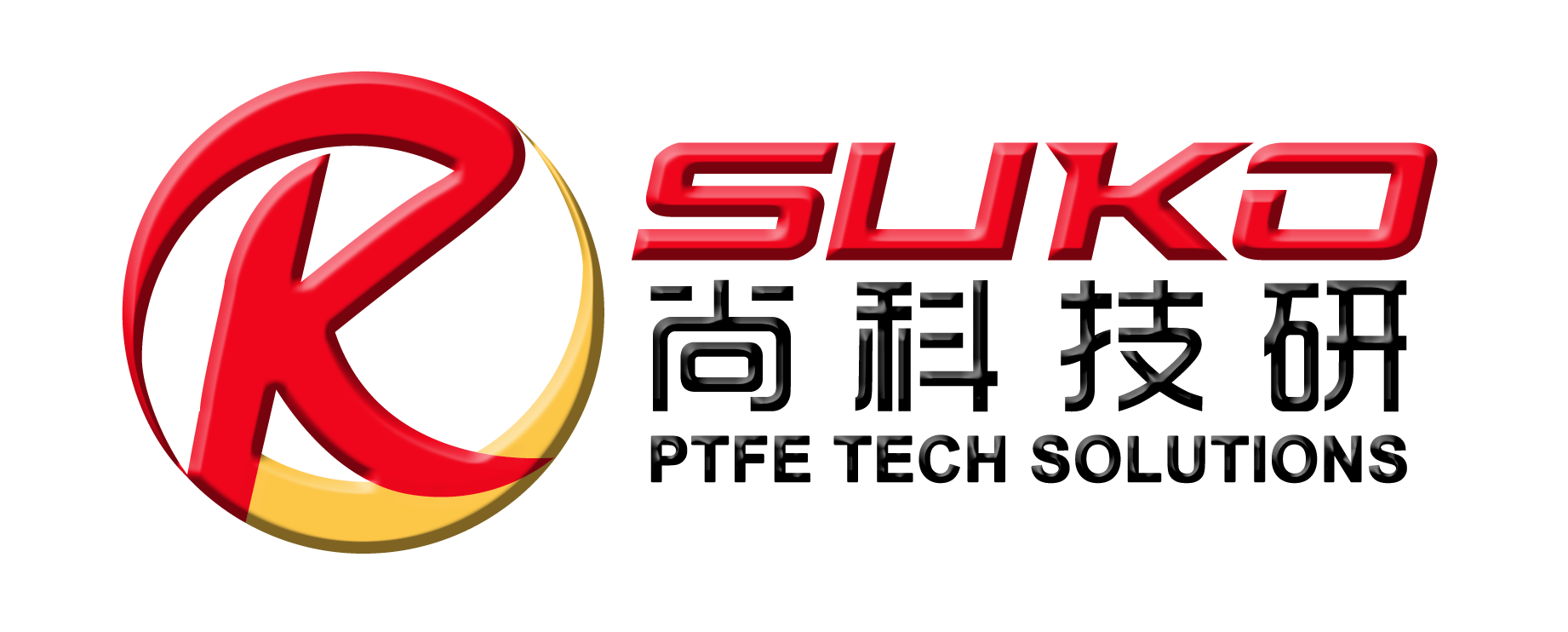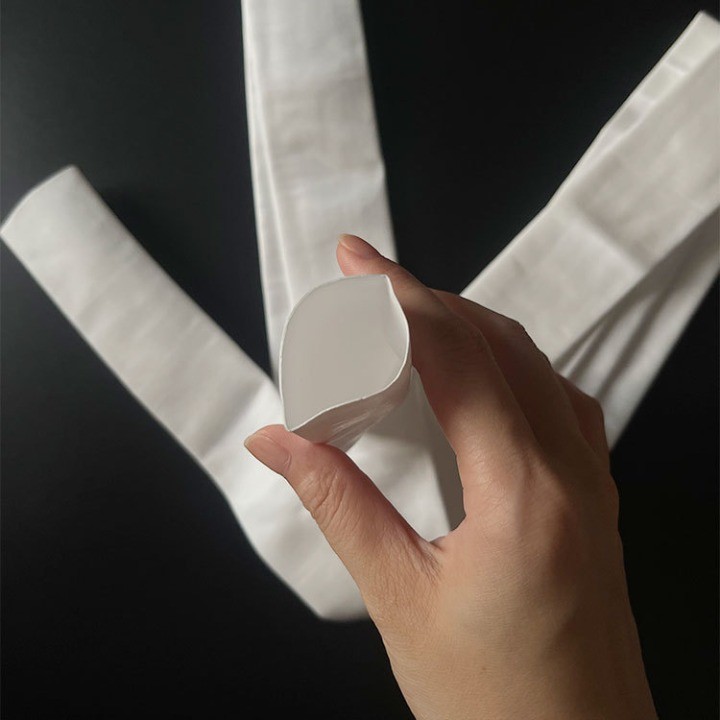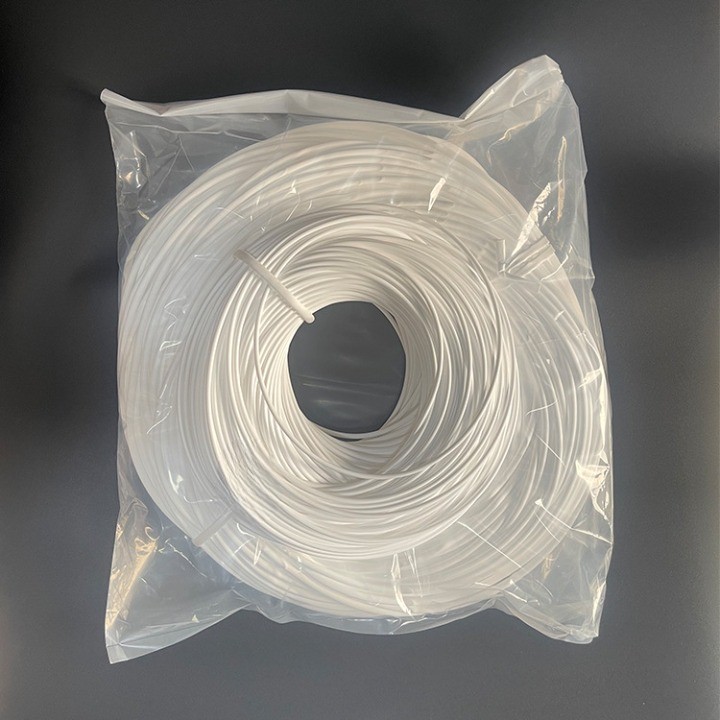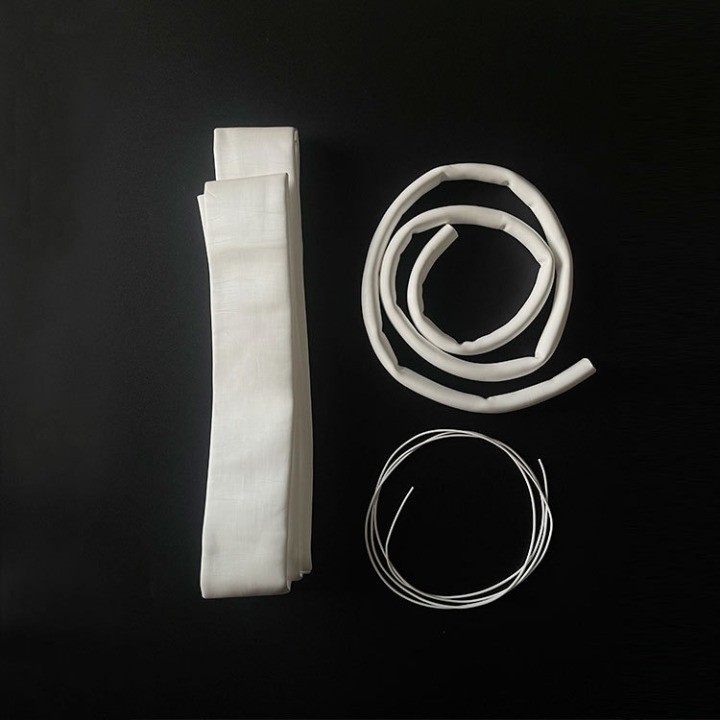The Ultimate Guide to Selecting Chemical Resistant ePTFE Tubing for Aggressive Industrial Fluids
In the demanding world of industrial fluid transfer, the integrity of your tubing is paramount. Handling aggressive chemicals, solvents, and acids requires materials that can withstand harsh conditions without degradation, contamination, or failure. Failure isn't just an inconvenience; it can lead to costly downtime, safety hazards, and environmental concerns. This is where chemical resistant ePTFE tubing emerges as a superior solution, particularly for aggressive industrial fluids.
At SUKO (https://www.sukoptfe.com/), we specialize in high-performance PTFE solutions. We understand the critical nature of selecting the right tubing for your application.
Are you constantly battling corrosion, leaks, or material incompatibility in your fluid transfer systems? The search for a truly reliable corrosive chemical tubing solution ends here.
What is ePTFE (Expanded Polytetrafluoroethylene)?
ePTFE stands for expanded Polytetrafluoroethylene. It's a fluoropolymer derived from standard PTFE (commonly known by the DuPont brand name Teflon™) but processed to create a microporous structure. This expansion process introduces a network of nodes interconnected by fibrils, resulting in a material that retains the remarkable chemical inertness and temperature resistance of PTFE while offering enhanced properties like improved flexibility, lower dielectric constant, and controlled porosity.
The unique microstructure of ePTFE is key to its performance:
- Chemically Inert: Like PTFE, ePTFE is virtually inert to almost all industrial chemicals and solvents.
- Temperature Resistant: It can operate across a vast temperature range.
- Hydrophobic: It repels water and water-based solutions.
- Low Friction: It has an extremely low coefficient of friction.
- Biocompatible & Pure: Many grades are suitable for high-purity applications.
Imagine a tubing material that laughs in the face of aggressive chemicals, maintaining its integrity from cryogenic temperatures up to scorching heat. That's the power of ePTFE.
Unpacking ePTFE Chemical Resistance: Why It Excels with Aggressive Fluids
The cornerstone of ePTFE's suitability for aggressive industrial fluids lies in its exceptional ePTFE chemical resistance. This resistance stems from the very nature of its molecular structure:
- Strong Carbon-Fluorine Bonds: Fluorine is the most electronegative element. The C-F bonds in PTFE and ePTFE are incredibly strong and stable, making them difficult for other chemicals to break or react with.
- Protective Fluorine Sheath: The fluorine atoms form a tight, non-reactive sheath around the carbon backbone of the polymer chain. This sheath effectively shields the carbon chain from attack by corrosive substances.
- Low Surface Energy: ePTFE has a very low surface energy, which means liquids bead up on its surface rather than wetting it. This reduces contact time and the potential for chemical interaction.
- Non-Polar Nature: Being non-polar, ePTFE resists attack from both polar and non-polar solvents across a wide pH range.
There are very few substances known to affect ePTFE, primarily molten alkali metals (like sodium), highly reactive fluorinating agents (like chlorine trifluoride at high temperatures and pressures), and some halogenated organic chemicals under specific extreme conditions. For the vast majority of industrial applications, including strong acids (sulfuric, nitric, hydrochloric), bases (sodium hydroxide), solvents (ketones, esters, hydrocarbons), and oxidizing agents, ePTFE offers unparalleled resistance.
This makes corrosive chemical tubing made from ePTFE an ideal choice for industries such as:
- Chemical Processing
- Petrochemicals
- Semiconductor Manufacturing
- Pharmaceuticals
- Biotechnology
- Aerospace
At SUKO, our Chemical Resistant Expanded PTFE Hose/Tube for Industrial Fluid Transfer is engineered to leverage these properties, ensuring safe and reliable fluid handling even in the most demanding environments.
Key Considerations When Selecting ePTFE Tubing: Understanding ePTFE Tubing Specifications
Choosing the right ePTFE tubing involves evaluating several ePTFE tubing specifications against your application's requirements.
- Chemical Compatibility:
- Primary Concern: While ePTFE is broadly resistant, always verify compatibility with the specific chemicals, concentrations, and combinations used in your process.
- SUKO Expertise: Our team at SUKO can help you assess compatibility based on your unique fluid matrix.
- Temperature Range:
- Operational Extremes: ePTFE typically handles temperatures from cryogenic levels up to 260°C (500°F). SUKO's ePTFE hose, for instance, boasts a resilience from -200°C to 260°C.
- Thermal Cycling: Consider if your application involves rapid temperature changes.
- Pressure Rating:
- Working Pressure: Ensure the tubing's maximum working pressure exceeds your system's operational pressure, including any potential surges.
- Wall Thickness & Reinforcement: Pressure rating is influenced by inner diameter (ID), wall thickness, and any reinforcement (e.g., braiding for hoses).
- Dimensions: ID, OD, and Wall Thickness:
- Flow Rate: The inner diameter (ID) directly impacts flow rate.
- Fit and Connection: Outer diameter (OD) is crucial for compatibility with fittings.
- Durability & Flexibility: Wall thickness affects pressure rating, kink resistance, and flexibility. SUKO offers custom sizes from 1mm to 50mm ID.
- Flexibility and Bend Radius:
- Installation Needs: The microporous structure of ePTFE can make it more flexible than solid PTFE, but it's still important to respect its minimum bend radius to avoid kinking or damage.
- Dynamic Applications: For applications involving movement, choose a hose construction designed for flexibility.
- Purity Requirements:
- Extractables & Leachables: For high-purity applications (semiconductor, pharmaceutical), ensure the ePTFE grade has low extractables and leachables.
- Manufacturing Process: The quality of the raw materials and the manufacturing process influence purity.
- Regulatory Compliance & Certifications:
- Industry Standards: Depending on your industry (e.g., FDA for food/pharma, USP Class VI for medical), specific certifications may be required. Always check if the ePTFE tubing meets relevant standards.
- Permeation:
- Gas/Liquid Permeability: While generally low, the porosity of ePTFE means it will have higher permeation rates for some gases and liquids compared to solid, non-expanded PTFE. This is a critical factor for certain highly volatile or toxic substances. The level of expansion dictates the porosity and thus permeation.
Consulting with experts like those at SUKO (https://www.sukoptfe.com/contact/) can help you navigate these specifications and ensure you select the optimal ePTFE tubing.
ePTFE vs Other Materials: A Chemical Resistance Showdown
When considering an industrial fluid transfer hose or tubing for corrosive chemicals, it's crucial to compare ePTFE vs other materials chemical resistance and overall performance.
| Feature | ePTFE (Expanded PTFE) | Standard PTFE (Solid) | FEP (Fluorinated Ethylene Propylene) | PFA (Perfluoroalkoxy Alkanes) | Silicone | PVC (Polyvinyl Chloride) | Stainless Steel (e.g., 316L) |
|---|---|---|---|---|---|---|---|
| Chemical Resistance | Excellent (Virtually Inert) | Excellent (Virtually Inert) | Very Good, less than PTFE/ePTFE | Excellent, similar to PTFE | Good (fair to some oils, weak acids/bases) | Fair (good to some acids/bases, poor with solvents) | Good to Excellent (depends on chemical & grade; pitting/crevice corrosion risk) |
| Temperature Range | -200°C to 260°C | -200°C to 260°C | -200°C to 200°C | -200°C to 260°C | -60°C to 200°C | -10°C to 60°C | Varies widely, can be very high |
| Flexibility | Good to Very Good (microporous) | Fair (stiffer) | Good | Good | Excellent | Good (can be rigid or flexible) | Poor (rigid) |
| Purity | High (can be very high purity grades) | High (can be very high purity grades) | High | High | Good (medical grades available) | Fair (plasticizers can leach) | Excellent (electropolished) |
| Permeation (Gas) | Higher than solid PTFE | Very Low | Low | Low | Moderate to High | Moderate | Negligible (if no defects) |
| Cost | Higher | High | Moderate to High | Higher | Moderate | Low | Moderate to High |
| Primary Weakness | Permeation (relative to solid PTFE), some reactive fluorinators | Stiffer, harder to process | Lower max temp than PTFE | Higher cost than FEP | Swells with some solvents/oils | Limited temp & chemical range, plasticizers | Specific chemical attack (e.g. chlorides on SS304) |
Key Takeaways from the Comparison:
- For Ultimate Chemical Resistance: ePTFE and PTFE are unparalleled. ePTFE often offers better flexibility.
- Temperature Extremes: Fluoropolymers like ePTFE, PTFE, and PFA excel.
- Cost vs. Performance: While ePTFE might have a higher upfront cost, its longevity and reliability in aggressive environments often lead to a lower total cost of ownership by minimizing failures and replacements. PVC is cheap but highly limited.
- Specialized Needs: Silicone offers excellent flexibility and biocompatibility but falls short on broad chemical resistance. Metals offer strength but can corrode.
The choice often comes down to the severity of the chemical environment. For the most aggressive industrial fluids, the robust ePTFE chemical resistance makes it a leading contender.
Real-World Applications: Where ePTFE Shines
The unique combination of properties makes ePTFE tubing indispensable across various critical applications:
- Petrochemical Pump Lines: Safely transferring crude oil fractions, refined products, and aggressive processing chemicals. ePTFE's resistance to hydrocarbons and sulfur compounds is vital.
- Semiconductor Acid Delivery & Wet Processing: High-purity ePTFE tubing is used for transporting ultra-pure water (UPW), strong acids (HF, H2SO4, HNO3), bases, and solvents in chip manufacturing, where contamination is catastrophic.
- Pharmaceutical & Biotech Solvent Systems: Transferring active pharmaceutical ingredients (APIs), solvents, and sterile media. Its non-reactive and non-contaminating nature is crucial for product purity and FDA compliance.
- Chemical Manufacturing & Processing Plants: Handling a wide array of corrosive raw materials, intermediates, and finished products, from bulk chemical transfer to laboratory use.
- Aerospace & Defense: Fuel lines, hydraulic systems, and fluid transfer in extreme temperature and chemically aggressive environments.
- Environmental Monitoring & Sampling: Tubing for sampling aggressive stack gases or contaminated water sources, where sample integrity is key.
When failure is not an option, and purity is paramount, industry leaders turn to proven solutions. SUKO's ePTFE tubing is engineered for these exact scenarios.
SUKO's Solution: Chemical Resistant Expanded PTFE Hose/Tube for Industrial Fluid Transfer
At SUKO, we are proud to offer our specialized Chemical Resistant Expanded PTFE Hose/Tube for Industrial Fluid Transfer. This product is a testament to our commitment to quality and performance in demanding industrial settings.
Product Highlights:
- Product Title: Chemical Resistant Expanded PTFE Hose/Tube for Industrial Fluid Transfer
- Unparalleled Chemical Resistance: SUKO's expanded PTFE hose offers exceptional performance in harsh industrial environments, guaranteeing the safe transfer of acids, solvents, and aggressive media.
- Extreme Temperature Resilience: Operates effectively from -200°C to 260°C, accommodating a vast range of process conditions.
- Corrosion Elimination: Our expanded PTFE pipe eliminates corrosion risks commonly faced in chemical processing plants, extending service life and reducing maintenance.
- Versatile Applications: Ideal for:
- Petrochemical pump lines
- Semiconductor acid delivery
- Pharma solvent systems
- Customizable Sizes: We offer custom sizes from 1mm to 50mm ID to meet your specific flow rate and system requirements.
By choosing SUKO's ePTFE tubing, you are investing in reliability, safety, and operational efficiency. Our expertise in PTFE materials ensures that you receive a product tailored to withstand the rigors of your application.
Installation and Maintenance Tips for ePTFE Tubing
To maximize the lifespan and performance of your ePTFE tubing:
- Proper Handling: Avoid crushing, kinking, or dragging the tubing over abrasive surfaces.
- Correct Fittings: Use fittings specifically designed for fluoropolymer tubing. Ensure they are made from compatible materials.
- Avoid Over-Tightening: Over-tightening fittings can damage the tubing and lead to leaks. Follow manufacturer recommendations.
- Respect Bend Radius: Do not bend the tubing tighter than its specified minimum bend radius.
- Regular Inspection: Periodically inspect tubing for any signs of wear, discoloration, or damage, especially at connection points.
- System Compatibility: Ensure the entire system (pumps, valves, gaskets) is compatible with the process fluids.
Why Choose SUKO for Your ePTFE Tubing Needs?
Selecting an ePTFE tubing supplier is as critical as selecting the material itself. At SUKO (https://www.sukoptfe.com/), we offer more than just a product; we provide a partnership built on:
- Expertise: Years of specialized experience in PTFE and ePTFE manufacturing and applications. We understand the nuances of ePTFE chemical resistance and ePTFE tubing specifications.
- Quality: Stringent quality control processes from raw material sourcing to final product inspection, ensuring consistent and reliable performance.
- Customization: The ability to provide custom dimensions (1mm to 50mm ID for our flagship product) and potentially other tailored solutions to meet your unique challenges.
- Customer Support: Our knowledgeable team is ready to assist you with material selection, technical queries, and application advice.
- Trustworthiness: We are committed to providing transparent information and reliable solutions that enhance the safety and efficiency of your operations. Our track record in serving demanding industries speaks for itself.
We believe in providing not just tubing, but peace of mind.
Don't let aggressive fluids compromise your operations. It's time to upgrade to a solution designed for the toughest challenges.
Conclusion: Make the Smart Choice for Your Aggressive Fluid Transfer Needs
Selecting the right tubing for aggressive industrial fluids is a critical decision that impacts safety, efficiency, and profitability. Expanded PTFE (ePTFE) stands out due to its virtually universal ePTFE chemical resistance, wide temperature range, and adaptability. By carefully considering ePTFE tubing specifications and understanding how ePTFE vs other materials chemical properties stack up, you can confidently choose a solution that delivers long-term performance.
SUKO's Chemical Resistant Expanded PTFE Hose/Tube for Industrial Fluid Transfer is engineered to meet these demanding requirements, providing a reliable and durable industrial fluid transfer hose for your most corrosive chemical tubing applications.
Ready to experience the SUKO difference?
- Explore our product: Chemical Resistant Expanded PTFE Hose/Tube for Industrial Fluid Transfer
- Discuss your specific needs: Contact our expert team today via our Contact Page or email us at info@sukoptfe.com.
Let SUKO be your partner in mastering aggressive fluid handling.
Frequently Asked Questions (FAQ)
Q1: What makes ePTFE so much more chemically resistant than other plastics like PVC or nylon?
A1: The exceptional chemical resistance of ePTFE (and PTFE) comes from its unique molecular structure. It's composed of very strong carbon-fluorine (C-F) bonds. Fluorine is highly electronegative and forms a protective, non-reactive sheath around the carbon backbone. This makes it extremely difficult for chemicals to attack or react with the polymer. Other plastics have weaker bonds or reactive sites that are susceptible to attack by strong acids, bases, or solvents.
Q2: Can SUKO provide ePTFE tubing in custom lengths or with specific fittings for my application?
A2: Yes, SUKO specializes in providing solutions tailored to customer needs. While our standard offering includes custom IDs from 1mm to 50mm for our Chemical Resistant Expanded PTFE Hose/Tube, we encourage you to discuss your specific requirements for lengths and fitting compatibility with our technical team. Please reach out to us through our Contact Page or email info@sukoptfe.com to detail your needs.
Q3: How do I determine if ePTFE tubing is the right choice for my specific chemical or industrial process?
A3: Determining the right tubing involves assessing several factors: the specific chemicals being handled (including their concentrations and temperatures), the operating pressure, temperature range of your process, flexibility requirements, and any purity or regulatory standards. While ePTFE offers broad chemical resistance, it's always best to consult chemical compatibility charts and discuss your application with material experts. The team at SUKO has extensive experience and can help you evaluate if our ePTFE tubing, with its robust ePTFE chemical resistance, is the optimal fit for your aggressive industrial fluids.
Q4: What is the difference in performance between standard (solid) PTFE tubing and ePTFE tubing?
A4: Both standard PTFE and ePTFE tubing offer outstanding chemical and temperature resistance. The main differences arise from ePTFE's expanded, microporous structure:
- Flexibility: ePTFE is generally more flexible and less prone to kinking than solid PTFE of similar wall thickness.
- Permeability: Due to its porous nature, ePTFE will have a higher permeability to gases and some liquids compared to solid PTFE. This can be a factor in applications involving highly volatile or very small molecule substances.
- Other Properties: ePTFE can have a lower dielectric constant and tailored porosity, which can be advantageous in specific applications like venting or filtration (though this guide focuses on fluid transfer).
For many industrial fluid transfer hose applications, the enhanced flexibility of ePTFE is a significant benefit, while its chemical resistance remains top-tier.
Post time: Jun-05-2025




